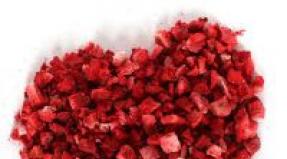Alcohol poisoning: clinical manifestations, emergency care. Ethyl alcohol poisoning - acute alcohol intoxication
Alcohol is a poison to the human body that can have harmful, painful and in some cases even fatal effects. The term "alcohol intoxication" is appropriate when the per mille of alcohol in the blood significantly exceeds 0.4.
Symptoms of alcohol intoxication
If the amount of alcohol in the blood fluctuates around 1.5 ppm, then this condition is called the initial stage of alcohol intoxication. This stage is fraught with pain. When the ppm indicators reach 2-3, the middle stage of alcohol intoxication sets in, and all values \u200b\u200bhigher than the indicated figures indicate a severe stage of the condition in question.
Naturally, it is impossible to accurately determine ppm at home, therefore, the presence / absence of certain symptoms is used to differentiate the stages of alcohol intoxication. For the first and second (mild and medium) stages of alcohol intoxication, the following signs will be characteristic:

The above symptoms correspond to the first and second stages of alcohol intoxication, harm to the body will be done, but still fixable. The second stage of the condition under consideration may end with alcoholic anesthesia or go into the third (severe) stage, which has some characteristic features. For the third stage of alcohol intoxication, the following will be characteristic:
- complete loss of control over your body - both walking and just sitting are quite difficult;
- cold and sticky skin;
- lack of intelligible speech.
Important! The onset of the third stage of alcohol intoxication is fraught with serious consequences, including alcoholic coma and death. The first two stages of the phenomenon under consideration can be completely compensated for at home, but if a person has symptoms of severe intoxication, then an ambulance team should be called. Before the doctor arrives, a sick person should be wrapped in a blanket, and if he is conscious, then make him vomit.
How to remove alcohol intoxication
It is worth knowing that there are a number of measures that will prevent alcohol intoxication. If a feast is planned, then in order to avoid the development of the condition in question, it is necessary to prepare the body:
- immediately before the feast, take a few tablets of activated charcoal (3-5) and continue to take them as you drink alcoholic beverages (for example, every hour and a half, 2-3 tablets);
- before the start of the holiday, eat a plate of thick porridge from any cereal;
- Drink a glass of whole milk before drinking alcohol.
These methods will not save the body from the negative effects of alcohol, but minimize the consequences.
To reduce the effects of alcohol intoxication of the first and second stages, doctors recommend drinking a lot of water, but you should not get carried away with brine - it contains an acid that creates only short-term compounds with ethanol, which automatically complicates the removal of toxins from the body. A great way to quickly restore health after drinking alcohol is to drink, which not only neutralizes the effects of acetaldehyde, but also has an analgesic effect.
 Note:vomiting with alcohol intoxication is great! In no case should you restrain the urge to vomit, since it is in this way that the stomach is freed from excess alcohol, which will invariably lead to relief from alcohol intoxication.
Note:vomiting with alcohol intoxication is great! In no case should you restrain the urge to vomit, since it is in this way that the stomach is freed from excess alcohol, which will invariably lead to relief from alcohol intoxication.
In the first and second stages, vomiting and subsequent sleep will be the best method of dealing with alcohol intoxication. But if in the second stage of the state under consideration a person fell into alcoholic anesthesia, then in no case should you induce vomiting! It is necessary to constantly be near a sick person in order to prevent vomit from entering the respiratory tract during involuntary vomiting.
If alcohol intoxication occurs in a mild or moderate stage, then you can independently force the natural processes of removing alcohol from the body:
- Take a moderate contrast shower - the water should be cool, but not icy. The procedure is carried out within 5-10 minutes, but if the condition does not allow you to take such a shower, then you need to at least rub the body with a damp towel.
- Take painkillers to relieve headaches, but in their composition should not have paracetamol.
- Not later than 2 hours after the onset of symptoms of alcohol intoxication, take Filtrum or Polysorb - enterosorbents will reduce the negative effect of alcohol on the body, will contribute to the speedy removal of toxins from the organs of the gastrointestinal tract.
- After getting rid of the acute symptoms of alcohol intoxication, it will be useful to consume chicken or beef broth.
- To sleep peacefully, you can take or motherwort tablets.
Treatment of alcohol intoxication
We recommend reading:Treatment will be needed in the severe stage of alcohol intoxication and, first of all, it will be necessary to prevent further absorption of alcohol into the blood. For this purpose, a person with severe alcohol intoxication is given 10 tablets to drink, and then gastric lavage is performed. Such a procedure can be carried out by introducing a large amount of warm water into the patient's stomach, after which a gag reflex is caused by mechanical irritation of the root of the tongue. At the same time, doctors take measures to prevent the development of collapse, for which intramuscular injections of cordiamine or caffeine are taken.
The most effective treatment for severe alcohol intoxication is the rapid sobering method. First, vitamin B6 is injected intramuscularly into the patient, and literally after 5-10 minutes he begins to think much better, there comes a kind of enlightenment of the mind. At this point, the patient is given a drink "cocktail" of corazol, phenamine and nicotinic acid, diluted in 100 ml of warm water. After 10-20 minutes, the patient's condition returns to normal, thinking is actively cleared up, behavior is within the normal range, and emotional retardation disappears.
note: phenamine is not sold in pharmacies, so it is impossible to make such a cocktail at home. A similar method of rapid sobering is used only in medical institutions.
To lower the concentration of alcohol in the blood, doctors use:
- 1 ml of 1% solution of nicotinic acid;
- 20 ml of 40% glucose solution;
- 10 ml of 5% ascorbic acid solution.
Droppers for alcohol intoxication
If a person is diagnosed with a severe stage of alcohol intoxication, then irreparable harm can be done to his body. Doctors in this case must prescribe to the patient a dropper with a complex of drugs that can prevent the development of severe pathological processes against the background of alcohol poisoning.
Currently, poisoning can occur with any food. But most often this phenomenon occurs with excessive or poor-quality alcohol consumption. On the eve of the holidays, the problem becomes most urgent.
How to remove alcohol intoxication at home quickly and effectively, not a small number of people are beginning to be interested. Today, there are several traditional and folk methods to alleviate the condition. But more important is the prevention of such a condition.
Even in small doses, alcohol has a detrimental toxic effect on our central nervous system. In medicine, doctors distinguish three stages of alcohol intoxication - mild, moderate and severe.
Today we will talk about what to do with alcohol poisoning at home, what assistance should be provided first of all in order to alleviate the condition of the injured person and prevent serious consequences for health and life.
What can not be done in case of alcohol poisoning, and in what cases should you consult a doctor without wasting precious time on self-medication? Let's analyze these issues in detail, because this information is very important and can help, if necessary, provide first aid and save a person's life.
Stages of alcohol poisoning and their symptoms
For alcohol to act on the body, in fact, only 10-12 grams of ethanol is enough. This is equal to a glass of wine or a glass of vodka, they are usually considered as an average serving. It is after this dose that the breathalyzer is able to detect the release of alcohol vapors. Conventionally, the following stages of development of alcohol intoxication with certain manifestations are distinguished:
- 1-2 servings. Already after this volume, there is vasodilation, a slight increase in heart rate, a feeling of warmth behind the sternum, self-confidence and a decrease in concentration. Indicators of alcohol vapor in the exhaled air range from 0.3 to 1.0 ppm. When drinking alcohol on an empty stomach, a slight speech disorder may occur.
- 5-6 servings. Balance is significantly disturbed, dizziness and slow reaction appear. A person is capable of doing reckless actions. The ppm volume is 1.0-1.5. The state of intoxication gives out a shaky gait and alternation of psychomotor agitation with apathy.
- 8-9 servings. After such an amount of alcoholic drink, a hangover syndrome appears in the morning. During intoxication, speech, coordination of movements and vision are sharply disturbed. The results of the breathalyzer indicate 1.5-2.2 ppm.
- 11-12 servings. The condition is quite severe. The body's response to alcohol consumption is uncontrolled vomiting, frequent urination, and diarrhea. There is no reaction to external stimuli, a person is not able to move independently, and sometimes even speak. The volume of alcohol in the exhaled air is 2.2-3.0‰.
- 12 servings or more. The concentration of alcohol in the blood exceeds all permissible limits. As a result, a coma or death can develop. The body is not able to get rid of ethanol on its own, which affects the functioning of the respiratory system and heart rate.
Attention!!!
For an adult in good health, one drink per hour is acceptable. It should be understood that this is a relatively safe amount of alcohol. The best option would be the complete absence of the supply of strong drinks.
First aid - how you can help yourself
Life presents us with not always pleasant surprises, very often the situation after festive feasts develops in such a way that the question arises: when poisoning occurred and a person has alcohol intoxication, how to remove it at home, urgently, to save a life?
In severe alcohol intoxication, in the first place, a person should not be left unattended. He is constantly in a certain danger, as he can fall and suffocate with vomit. In addition, in this state, a sudden stop of breathing and cardiac activity often occurs, a stroke develops, renal or hepatic colic develops.
Attention!!!
If you experience persistent vomiting, with impurities of bile or blood clots, you should immediately call an ambulance. Such symptoms usually indicate the development of severe pathology.
Under the influence of alcohol, even the most calm and modest person is capable of sudden outbursts of aggression. Therefore, before conducting first aid, it is necessary to try to explain to the victim the procedure for their actions. They will be as follows:
- Release the person from dirty, oppressive, wet clothes and cover warmly.
- You should not try to deliver the victim to the shower room or constantly give him strong tea, especially coffee. The caffeine contained in these drinks can increase the effects of intoxication, which in turn provokes the development of a heart attack and a sharp increase in blood pressure.
- Induce an artificial gag reflex. This is allowed only if the person is conscious. In a fainting or pre-fainting state, this is fraught with the ingress of vomit into the respiratory tract.
- During vomiting, give a drunken position half-sitting, tilt your head forward and constantly hold it to prevent injury.
- If the poisoned person is not able to sit, then during a vomiting attack it is necessary to lay him on his side and turn his head so that it hangs from the bed. In this position, the victim may fall, so it must also be held.
- To remove alcohol residue from the stomach, one can flush it out by consuming 2 glasses of salt water. This is usually followed by a gag reflex. Rinsing is recommended until the water is clear.
Help with severe alcohol poisoning!
If the stomach is empty and vomiting does not stop, then the following should be done: wet the head with cold water, apply ice from the back of the head, drink a little Regidron solution, do not consume any food or other drinks.
We reduce alcohol intoxication - methods of rapid impact
First of all, it is necessary to reduce the amount of ethanol in the bloodstream. If this is not done, it will be difficult for the body to cope on its own. How to quickly remove alcohol intoxication and sober up without consequences? The following methods will help you:
- The simple solution is to drink plenty of fluids in combination with diuretics. It is worth remembering that such a tool as Furosemide is prohibited. This can cause kidney problems.
- A good option is to take aspirin, which actively neutralizes acetaldehyde, a substance produced by the breakdown of ethanol. That is what causes the symptoms of poisoning.
- To bind alcohol and the elements of its decay in the gastrointestinal tract, it is worth taking a few tablets of activated charcoal or Filtrum-Stee.
- In severe cases, intravenous administration of certain drugs is required. It is not recommended to do this without special knowledge.
- With severe intoxication, a good result is observed with intramuscular administration of vitamin B6.
- After clearing the mind, you can drink a solution of nicotinic acid, phenamine, and corazol. A few drops are added to half a glass of water. Even with strong intoxication, after a few minutes, thinking normalizes and lethargy disappears, and after 1-2 hours, complete sobering up occurs.
A solution of glucose, ascorbic acid or nicotinamide removes alcohol intoxication well. These funds can be counted with B vitamins.
When is an ambulance called immediately?
The threat of life with alcohol intoxication can occur at any time. The risk is highest in adolescence, in the elderly, and in those with concomitant somatic diseases.
In case of alcohol poisoning, when should an ambulance be called?
There are symptoms in the presence of which it becomes clear that simple home methods are not able to have the desired effect. Therefore, with the formation of the following symptoms, you need to call an ambulance:
- lack of consciousness and reaction to physical and noise stimuli;
- sharp pallor of the skin with severe cyanosis and the presence of cold, sticky sweat;
- slowing of the respiratory rate;
- the presence of pigmentation of an unusual shape on the skin;
- development of seizures;
- pathological wheezing or severe snoring;
- intermittent breathing lasting more than 10 seconds;
- entry of vomit into the respiratory tract.
What can't be done?
First aid to a person who is in alcohol poisoning should be approached with all seriousness. There are a fairly large number of myths, according to which you can easily get rid of a serious condition. However, in practice, many of them remain ineffective or, on the contrary, can lead to unpleasant consequences.
Attention!
If there are clear signs of alcohol poisoning, it is forbidden to take sleeping pills or sedatives. In most cases, this leads to death.
There is a difference between a mild degree of intoxication and real alcohol poisoning. Therefore, in severe cases, it is strictly forbidden to do the following:
- Take a drunk person out into the fresh air and make him walk outside. Due to a sharp loss of coordination of movements, serious injuries can occur when falling or colliding with various objects.
- Leave a person unattended. In cases of drinking a large dose of alcohol, the concentration of ethanol in the bloodstream will increase as it is absorbed for some time, even if the person stopped drinking alcohol several hours ago.
- Give large doses of strong coffee or black tea, as well as any drinks containing caffeine. This component, when mixed with alcohol, provokes dehydration of the whole organism. Such exposure is fraught with negative consequences in the structure of the brain.
- Do not throw cold water on a drunk person. As a result of intoxication, body temperature decreases, an additional cold effect can provoke hypothermia.

Non-traditional methods of influence to get out of the state of alcoholic intoxication have been known for a long time. However, many of them are effective only in complex treatment with a certain amount of ethanol consumption. If there was a clear poisoning, then such funds will only be an addition to the complex effects. The following is recommended for admission:
- Diuretic teas. They are decoctions of parsley root, linden flowers, thyme or mint.
- Saffron tincture. It is recommended to take it after a complete cleansing of the stomach. To prepare, one teaspoon of saffron powder is enough for a glass of boiling water.
- Egg whites. For a single dose, you need 2 raw chicken eggs. It is necessary to thoroughly shake the proteins and drink in one gulp.
- Honey water. It helps to eliminate malaise and speed up the process of sobering up. Preparing the solution is quite simple. Take 150 g of natural honey and completely dissolve in a glass of water.
- Apple vinegar. They give ammonia in the amount of 10 drops per glass of water (this remedy is quite dangerous and it is better not to use it), it is better to take apple cider vinegar in the amount of 1 teaspoon per half glass of water. A solution of apple cider vinegar should be drunk in small sips every 15 minutes.
- Melissa and mint. When nausea does not go away even on an empty stomach, a decoction of lemon balm or mint will help overcome this condition. It is recommended to drink it chilled, half a glass every 40-50 minutes.
- Fresh orange juice. It helps to effectively neutralize toxins formed as a result of the breakdown of ethanol.
- Lemon and sugar. Half of the sour fruit needs to survive in a glass of water and add a spoonful of sugar.
- Brine. This proven folk remedy, for several centuries, has been making people feel better after a feast. The most suitable is sauerkraut brine. However, it is worth noting that such treatment has only a symptomatic effect and is more suitable for a hangover syndrome.
It's important to know!
Folk remedies that help with alcohol intoxication will be indispensable during the recovery period. They will help remove toxins and strengthen the immune system.
Medications for alcohol poisoning
It is better that all medicines are prescribed by a doctor. Of course, many of them are sold freely in pharmacies without a prescription. Before use, be sure to read the instructions and pay attention to compatibility with other medicines. In case of alcohol poisoning, you will need several drugs with different effects.
Enterosorbents
They are prescribed immediately after the release of the stomach from the remnants of alcohol and food. Enterosorbents, as it were, collect all the toxins and decomposition products of ethanol, which are subsequently excreted with feces. These include:
- Enterosgel. It is used for gastric lavage in a volume of 10-30 g for dissolution in warm water. After that, Enterosgel is taken in pure form up to 50 g, washed down with plenty of water, repeated intake is allowed after 3 hours.
- Polysorb MP. This drug should be drunk in the amount of one tablespoon, with a glass of water. With severe poisoning, the frequency of administration increases to 5-6 times a day.
- Smekta. The tool has not only a sorbing effect, but also enveloping. This is an additional plus for alcohol poisoning. A single dose is 1-2 sachets.
Adsorbents
Ethanol is able to quickly absorb into the bloodstream. Adsorbent preparations simply do not have time to bind the alcohol particles and prevent their spread. Therefore, they are considered as an addition to complex treatment and rehabilitation therapy. Adsorbents will be especially indispensable when various surrogates enter the body.
A fairly good effect is exerted by Lingosorb, Karbolen, Entegnin and Polifenap. Rekitsen RD is considered to be a modern and highly effective drug today. It is used not only for poisoning, but also for alcohol withdrawal.
Symptomatic effect
To eliminate all the results of the negative effects of ethanol on the body, complex therapy is required. For this, drugs such as:
- Biotredin. The drug has a fast action and does not accumulate in the tissues. It helps to normalize metabolism, activate mental ability, relieve hangover symptoms and emotional stress.
- Metadoxil. It contains a combination of magnesium and sodium. Allows you to accelerate the excretion of the breakdown of ethanol and quickly cleanse the blood. Available in tablets and solutions for injection.
- Yantavit. It is a biologically active food supplement. The therapeutic effect is due to the influence of Glucose and Succinic acid. It is used to strengthen the body's defenses and restore energy metabolism.
- Limontar. It has an antioxidant effect, enhances efficiency, appetite, neutralizes toxins, which ensures normal metabolism.
- Alka-Seltzer. This is a well-known drug that improves liver function, has an anti-inflammatory effect, relieves headache and muscle pain, and also eliminates the manifestation of withdrawal symptoms. This is due to the influence of citric acid and sodium carbonate, which is contained in its composition.
Precautionary measures
To prevent yourself from the consequences of excessive consumption of strong drinks, you should perform certain actions. Unfortunately, they will not save you from surrogates, but they will reduce the hangover syndrome and help you recover faster. These rules include:
- before the feast, take 3-5 tablets of activated charcoal;
- if possible, drink a glass of milk;
- vitamins that are taken a few days before certain events will help alleviate the condition;
- during the festivities, be sure to eat meat, fish dishes, as well as potatoes;
- do not drink alcohol with carbonated drinks;
- try to take a break between drinking alcohol more often;
- drink in small doses;
- you should leave the table for fresh air and be outside for at least 10 minutes;
- stop drinking alcohol 3-4 hours before bedtime;
- drink more natural juices or compote;
Immediately after the feast, you can eat fresh fruits and vegetables (you should not consume them in large quantities while drinking alcohol, as this will lead to the effect of fermentation in the gastrointestinal tract and cause additional problems).
Conclusion

So that there is no need to remove alcohol intoxication on your own and at home, you do not suffer from such a serious condition as a hangover, you should completely abandon strong drinks. This is the surest and most effective way.
It's important to know!
If only everyone who consumes alcohol would be aware of the damage it brings to the body, how its internal organs and systems suffer, then they would certainly change their attitude towards this addiction.
The cause of alcohol poisoning is most often an overdose provoked by excessive consumption of hard liquor or their low-quality analogues.
Alcohol intoxication is probably more common than any other condition, since you can encounter such a situation anywhere and at any time. Therefore, the algorithm for first aid in case of alcohol poisoning must be known to every person.
Alcohol, entering the body through the bloodstream, reaches the blood-brain barrier, where it begins to break down or break down into toxic metabolites.
The most dangerous neurotoxic metabolite is acetaldehyde, it disrupts the water-salt balance, retaining water in the intercellular space. What causes the development of edema and dehydration, reduces the total volume of blood, which leads to the development of weakness, lethargy and hypoxic phenomena in the tissues of the body.

Poisoning by alcohol substitutes can be so severe that it leads to the formation of such a threatening condition as an alcoholic coma.
Acetaldehyde also has a dyspeptic effect on the organs of the gastrointestinal tract - a person experiences a feeling of severe nausea and vomiting, pain appears in the epigastric region. The first signs of poisoning and symptoms can develop already in the first hours after taking an alcoholic beverage.
Degrees and clinical picture
Alcohol poisoning is a condition in which the functional activity of most organs and systems is disrupted, disorganization occurs in their work, which causes the formation of such symptoms as clouding or complete impairment of consciousness, changes in the rheological properties of blood, hemodynamic disturbances, and dyspepsia in the gastrointestinal tract.
Alcoholic coma is a complication of alcohol poisoning in which gross disturbances in the work of the central nervous system are formed, which leads to depression of consciousness and the respiratory center, the loss of a number of reflexes to external factors. The clinical picture of alcoholic coma in case of poisoning with alcohol surrogates is formed from the following stages and symptoms.
Toxicologists, psychiatrists, narcologists and neurologists in clinical practice distinguish several successive degrees of development of poisoning and alcoholic coma.
Symptoms of poisoning:
- Superficial coma of the first degree (stage of resorption) lasts approximately 6-7 hours. At this time, ethyl alcohol enters the systemic circulation, reaching the liver, it decomposes into active metabolites, the most toxic of which is acetaldehyde. There are symptoms such as: constriction of the pupils, changes in facial expressions, the reaction to light and pain stimuli is preserved. After washing the stomach, the victim comes to his senses.
- Superficial coma of the second degree (elimination phase) proceeds within 12 hours. Alcohol is broken down in the body. However, its concentration in the blood decreases, which leads to relaxation of muscle tissue, lack of reaction to ammonia and gastric lavage.
- Deep coma, characterized by a lack of response to external stimuli: constriction of the pupils and lack of response to light, does not respond to ammonia, tendon-muscle reflexes are not evoked, pain receptors are intact. Seizures and respiratory failure may occur. The body temperature can drop to 35 degrees, the pressure is low, and the pulse is thready. The victim needs emergency hospitalization in the detoxification department or intensive care unit.

An unconscious person in an alcoholic coma needs urgent medical assistance.
It is important to note that the first stage of ethyl alcohol poisoning can be dealt with without the use of specialized medical care, while the second and third stages require a qualified therapeutic approach and special equipment.
Emergency care for alcohol poisoning algorithm
To avoid the development of fatal complications from an alcoholic coma, the victim must be given emergency first aid. Consider what is the sequence of first aid for severe alcohol intoxication of the body and the beginning of a toxic coma.
The victim is unconscious.

Clinical picture of alcoholic coma in case of poisoning with alcohol surrogates.
First of all, it is necessary to determine the reaction to external stimuli (pain, tactile, auditory):
- call out loud
- pat on the shoulder or hand
If there are no reactions to external stimuli, immediately call an ambulance and carry out any of the possible actions described below.
Remember, if it is not possible to restore consciousness to a person, then the first thing to do is urgently call an ambulance. Until the arrival of specialists, monitor the vital signs of a poisoned person: pulse on the radial and carotid arteries, respiratory activity, reflex activity of the pupil.
Conscious victim.
| Action | Description |
|---|---|
 | Turn the casualty on their side or stomach to reduce the risk of vomit aspirating to the lungs. |
 | Let the victim smell the ammonia. |
 | Regardless of the ambient temperature, there is a violation of thermoregulation. To prevent hypothermia, a person must be covered with warm clothes. |
 | It is necessary to give the victim plenty of warm water to drink, after which a gag reflex should be induced to cleanse the upper gastrointestinal tract from alcohol and other contents. The procedure should be repeated several times. |
 | If the vomit contains bright scarlet blood, this is a sign of stomach bleeding. The victim must be transported to a medical facility immediately. |
 | To combat edematous syndrome and dehydration, the victim should be given a special drug Regidron * to drink. |
Regidron is a drug that is a powder that must be diluted in 1 liter of water. The preparation contains Sodium and Chlorine ions, which restore the osmotic pressure of the fluid in the gastrointestinal tract and blood plasma.
The recipe for the preparation of "Rehydron" at home.
Not always necessary drugs may be in the first aid kit or at hand. Knowing this recipe will save you time and money. Even if you are not at home, then in any cafe you can get everything you need.
It is worth remembering that large portions can provoke a repeated attack of vomiting and, therefore, even more dehydration.
Remember that properly provided first aid for poisoning at home can save a person's life. It may turn out that these measures will be enough to stabilize the state of the victim of alcohol intoxication. Severe intoxication can cause, and this condition requires immediate resuscitation. Don't be afraid to call an ambulance. The call can be canceled, but precious minutes cannot be returned.
According to official data from Rosstat, in 2011, 11.7 thousand residents of the Russian Federation died as a result of acute alcohol poisoning. And according to the estimates of the Center for Research on the Federal and Regional Alcohol Markets, the real mortality from alcohol poisoning is tens of percent higher than the statistical figures.
Almost every Russian may be faced with the need to provide emergency assistance to acquaintances or random people in case of alcohol poisoning. This is confirmed by the following facts:
- Russia ranks fifth in the world in terms of per capita alcohol consumption, according to WHO.
- According to official information from Rosstat, 12 million residents of the Russian Federation abused alcoholic beverages in 2011.
In this article, you will find information about acute ethyl alcohol poisoning and its consequences. You will also learn about the signs on the basis of which you can suspect this condition. Finally, you will receive first aid information for a patient affected by alcohol abuse.
Acute alcohol poisoning
Acute alcohol poisoning is a pathological condition of the body that develops as a result of excessive consumption of alcoholic beverages. It threatens the health and life of the patient.
The dose of alcohol, after which acute poisoning develops, depends on the individual characteristics of the organism - tolerance to alcohol, general health, age and body weight, the circumstances of drinking alcohol, the time during which a person took a toxic dose.
The average lethal dose of alcohol for an adult is 0.3 liters of 96% ethyl alcohol, or about 0.8 liters of 40% alcoholic beverages.
Fatal poisoning also occurs when drinking alcohol in smaller quantities. Risk factors for developing acute conditions include:
- Childhood.
- Lack of experience in drinking alcohol. Acute poisoning often develops in first-time drinkers.
- Drinking large amounts of alcohol in a short period of time. For example, such situations occur when a person drinks alcohol "in one gulp" in large quantities on a bet.
- Drinking alcohol on an empty stomach.
- Drinking alcohol in a state of physical or mental exhaustion.
- The combination of alcoholic beverages with other toxic substances, including nicotine.
- Acceptance of low-quality alcoholic beverages.
The main risk in acute poisoning is the death of the patient as a result of the inhibitory effect of alcohol on the respiratory center. Also, a fatal outcome can occur as a result of complications of poisoning - aspiration of vomit, cerebral edema, hypothermia as a result of loss of consciousness in the street, disorders of the cardiovascular system under the influence of ethyl alcohol and its metabolic products.
In addition, acute alcohol poisoning increases the risk of injury, the development of somatic diseases and mental disorders.
Signs of alcohol poisoning
Acute alcohol poisoning develops against the background of alcohol intoxication, the signs of which are well known. You may suspect the development of a life-threatening pathological condition in a drunk person if the following symptoms appear:
- Vomiting during or after drinking alcoholic beverages. This symptom often appears first in acute poisoning. Already at this moment, it is necessary to provide the patient with first aid, as well as consult a doctor if there is no improvement or deterioration in the condition of the victim.
- Deep disorders of consciousness - stupor and coma. A person in a state of stupor has no voluntary reactions to external stimuli. He reflexively responds to strong pain stimuli, for example, moves his hand away in response to a pinch. In a state of coma, even such reactions are absent.
- Respiratory disorders - a decrease in the frequency of respiratory movements to 12 or less per minute or an increase to 24 or more per minute, shallow or irregular breathing, wheezing, foaming from the mouth.
The condition of the patient's body deteriorates rapidly in acute alcohol poisoning, so medical attention should be sought if any of its signs appear. Does this mean that you should call an ambulance if the victim vomits as a result of excessive drinking?
Be guided in this case by the patient's condition. If he vomited once, is conscious, controls his behavior, performs actions aimed at detoxifying the body, then the help of a doctor with a high degree of probability will not be required. If vomiting occurs against the background of a deep impairment of consciousness, repeats many times, the patient's condition does not improve or worsens, immediately seek medical help.
Remember, it's better to be overly vigilant than to let a person die from alcohol poisoning.
First aid for alcohol poisoning
So, immediately call an ambulance if you suspect a friend or random person has acute alcohol poisoning. After that, give him first aid. What can help with alcohol poisoning?
Follow this algorithm of actions if the victim has a profound impairment of consciousness:
- Lay the patient on their side. This reduces the chance of aspiration of vomit.
- Make sure the victim's airway is open. If there is vomit or foreign objects in the patient's mouth, try to remove them using a rag, handkerchief, or tissue.
- If the patient has stopped breathing and circulating in front of you, perform cardiopulmonary resuscitation.
- Wait for the ambulance to arrive.
If the victim is conscious and partially or completely in control of their behavior, do the following:
- Do not try to stop vomiting, as toxic substances are removed from the body with vomit. If you are absolutely sure that the patient will not lose consciousness and can control his actions, flush his stomach. To do this, ask him to drink a liter of cold boiled water and induce vomiting.
- After gastric lavage, give the poisoned person any sorbent, such as activated charcoal.
- Give the patient plenty of water or weak warm tea with a little sugar. In acute poisoning, you can not drink carbonated drinks, coffee, strong tea, juices. It is strictly forbidden to consume low-alcohol drinks.
- Open the windows in the room where the poisoned person is. An influx of fresh air will improve his condition.
Important! The stomach should not be washed if there is a threat of loss of consciousness or the victim does not control his behavior.
Make sure the patient is feeling better after the actions taken. This applies to both his subjective sensations and objective signs - control of behavior, level of consciousness, lack of repeated vomiting. If there is no improvement, see a doctor.
So, acute alcohol poisoning refers to conditions that threaten human life. Seek immediate medical attention if you suspect a friend has severe poisoning. Before the arrival of the doctor, ensure the function of external respiration of the victim.
If the patient is conscious and in control of his behavior, wash his stomach, give him a sorbent and ask him to drink plenty of water. Do not be afraid to be overly vigilant - call an ambulance if the condition of the poisoned person causes you the slightest concern. Be sure to consult a doctor if a child has been poisoned by alcohol.
Spread of poisoning
For many years, alcohol poisoning has occupied a leading position among household poisonings in our country. More than 60% of all fatal poisonings are due to this pathology. Of these, about 98% of deaths occur before the provision of medical care at the prehospital stage. Only 1-2% of patients die in medical institutions. About 90% of those hospitalized are patients with chronic alcoholism.Alcohol poisoning (alcoholic coma)
General toxicological information
Acute alcohol poisoning is usually associated with the intake of ethyl alcohol or various alcoholic beverages with an ethyl alcohol content of more than 12%.Ethyl alcohol (ethanol C2H5OH) is a colorless liquid with a molecular weight of 46.07, a boiling point of 78.4 °C, and is miscible with water in any ratio.
In the toxicokinetics of ethanol, two distinct phases of distribution are distinguished: resorption (absorption) and elimination (excretion). In the first phase, the saturation of organs and tissues with ethanol occurs much faster than its biotransformation and excretion, as a result of which an increase in its concentration in the blood is observed. It easily penetrates cell membranes and is rapidly absorbed in the stomach (20%) and small intestine (80%). On average, after 1/2 hour, its concentration in the blood reaches its maximum level. In organs with intensive blood supply (lungs, liver, kidneys), the dynamic equilibrium of ethanol concentration in the blood and tissues is established within a few minutes.
Low-concentration alcoholic drinks (up to 30%) are absorbed faster. Food masses in the stomach slow down the absorption of alcohol due to their adsorption properties. When taken on an empty stomach, repeated doses, as well as in people with stomach diseases (gastritis, peptic ulcer), the resorption rate is much higher. In the liver, 90% of the ethanol that enters the body undergoes oxidation (oxidation rate 6-7 g / h) with the participation of the alcohol dehydrogenase enzyme according to the following scheme: ethanol -\u003e acetaldehyde -\u003e acetic acid -\u003e carbon dioxide and water (C2H5OH -> CH3CHO -> CH3COOH -> CO2 + H2O).
Under normal conditions, a small proportion of ethanol (1-2%) is oxidized to acetaldehyde by the enzyme catalase, which is found in all tissues (muscles, etc.). This proportion increases significantly with alcoholic excesses and is an important part of the mechanism for the development of acute and chronic alcohol tolerance. About 10% of the absorbed alcohol is excreted unchanged through the lungs and kidneys within 7-12 hours. To determine the above phases of the distribution of ethanol (which is of great diagnostic and forensic significance), the ratio of its concentration levels in urine and blood is calculated. In the resorption phase, this is the average ratio<1, а в фазе элиминации — всегда >1. The volume of distribution of alcohol is approximately 60 l/kg.
The pathogenesis of toxic action
Ethanol has a psychotropic effect associated with a narcotic effect on the central nervous system, which weakens the inhibitory process. In severe poisoning, a weakening of the excitation processes occurs, which is due to a change in the metabolism of the brain cell, a violation of the function of mediator systems, and a decrease in oxygen utilization.The narcotic effect of ethanol depends on:
a) the rate of resorption (the higher the rate of increase in the concentration of alcohol in the blood, the more pronounced the narcotic effect at identical concentrations in the same patient);b) phases of toxicokinetics (in the phase of resorption, the narcotic effect of ethanol is higher than in the phase of elimination at the same concentrations in the blood);
c) blood concentrations;
d) the degree of development of the patient's tolerance to alcohol. An important role in the toxic effect of alcohol is played by the development of metabolic acidosis, the source of which is the acidic products of its biotransformation (acetaldehyde, acetic acid).
The lethal dose of ethanol in a single dose is from 4 to 12 g per 1 kg of body weight (an average of 300 ml of 96% ethanol in the absence of tolerance to it). Alcoholic coma develops when the concentration of ethanol in the blood is about 3 g / l, and the lethal concentration is 5-6 g / l.
Clinical picture of alcohol poisoning
In the clinical course of acute alcohol poisoning, the most characteristic pathological syndromes can be distinguished. In the toxicogenic stage, coma and other neurological disorders, disorders of external respiration, and functions of the cardiovascular system are of the greatest importance; in the somatogenic stage - neuropsychiatric disorders, inflammatory lesions of the respiratory system, myorenal syndrome, withdrawal syndrome.In the toxicogenic stage of poisoning, the severity of the patient's condition is determined by the depth of the coma and associated complications. There are two stages of alcoholic coma in two variants of the course: 1) the phase of superficial coma (uncomplicated and complicated); 2) deep coma phase.
The phase of superficial coma is manifested by loss of consciousness, lack of contact with others, a decrease in corneal, pupillary reflexes, and a sharp inhibition of pain sensitivity. There is an inconstancy of neurological symptoms: a decrease or increase in muscle tone and tendon reflexes, the appearance of pathological eye symptoms (“play of the pupils”, floating movements of the eyeballs, anisocoria), which are transient. An increase in muscle tone is accompanied by trismus of masticatory muscles, the appearance of meningeal symptoms, myofibrillation with predominant localization in the chest and neck. The size of the pupils can be different, but miosis is more often observed.
In the clinical course of superficial alcoholic coma, two stages are distinguished, based on differences in the response to pain stimulation. In Art. an injection or pressure at the painful points of the trigeminal nerve is accompanied by dilation of the pupils, a mimic reaction of the muscles of the face, and protective movements of the hands. A similar reaction is caused by exposure to ammonia (cotton wool moistened with a 25% solution of ammonia is brought to the nose at a distance of 3-5 cm), as well as therapeutic measures (gastric lavage, subcutaneous injections, etc.). In II Art. in response to such irritations, only mild hypertonicity of the arms and legs, myofibrillations appear; pupillary reaction is inconsistent.
The phase of deep coma is expressed by a complete loss of pain sensitivity, the absence or a sharp decrease in corneal, pupillary, tendon reflexes, muscle atony, and a decrease in body temperature. The content of alcohol in blood and urine also fluctuates over a fairly wide range (respectively 3.0-7.5 and 3.0-8.5 g/l).
Thus, the neurological symptoms of an alcoholic coma, especially a deep one, are only a variant of a narcotic coma and can occur with a different etiology of a toxic-hypoxic nature.
The electroencephalogram in alcoholic coma of various depths has characteristic changes: in superficial coma, disorganized slow basic activity (8-10 counts / s with an amplitude of 10-80 μV), against the background of which synchronous bursts of delta activity regularly occur (1-4 counts / s with an amplitude of 60-180 μV) and theta activity (4-7 counts / s with an amplitude of 50-100 μV). In deep coma, monomorphic sinusoidal delta activity (1–4 counts/s with an amplitude of 100–240 μV) is noted, against which single elements of the main brain activity are recorded (Fig. 3).
Rice. 3. EEG in deep alcoholic coma
Disturbances in external respiration are caused by various obstructive-aspiration complications - retraction of the tongue, hypersalivation and bronchorrhea, aspiration of vomit, laryngobronchospasm. Clinically, they are characterized by stridor rapid breathing, arrhythmia and disorganization of the act of breathing, acrocyanosis, swelling of the cervical veins, coarse rales over the large bronchi. Aspiration of the acidic contents of the stomach often leads to the development of atelectasis of the lungs or Mendelssohn's syndrome (burns of the respiratory tract).
Central type respiratory failure is a rarer complication that occurs in this pathology only in a state of deep coma. The most severe respiratory disturbances are noted in the combination of these two forms. This is the leading cause of death of patients in the acute period of poisoning at the prehospital stage in the absence of medical care.
Respiratory disorders are accompanied by a violation of the CBS of the blood. Metabolic acidosis in alcoholic coma is compensated to some extent by respiratory alkalosis. Disruption of compensatory capabilities leads to the development of combined decompensated acidosis.
Disorders of the cardiovascular system in alcoholic coma are nonspecific. The most constant clinical symptom, regardless of the depth of the coma, in most cases is tachycardia.
Arterial pressure in superficial coma ranges from moderate hypertension to slight hypotension, and then levels off. In a deep coma, with an increase in the inhibition of the stem mechanisms of regulation of the vascular system, a decrease in vascular tone occurs, which causes a drop in blood pressure up to collapse.
The study of central hemodynamics indicates the phenomena of hypovolemia, most pronounced in deep coma. An increase in blood hematocrit, disorders of the blood coagulation system towards hypercoagulation in combination with acidosis and general hypothermia lead to a violation of the rheological properties of the blood, which causes microcirculation disorders. Their clinical manifestations are pallor and marbling of the skin, acrocyanosis, injection of the sclera.
ECG changes (decrease in the ST segment, negative T wave, extrasystole) are most often noted in deep coma. They are non-permanent and reversible. These violations are secondary, associated with general changes in homeostasis in alcoholic coma. There is no direct specific cardiotoxic effect of ethanol at very high concentrations in the blood. The observed hemodynamic disorders are mainly associated with dysregulation of vascular tone. However, in the presence of chronic cardiovascular diseases, especially alcoholic cardiomyopathy, persistent arrhythmias and cardiac conduction disorders may develop. Late complications arising in the somatogenic stage relate primarily to the neuropsychic sphere of the body.
The exit from an alcoholic coma proceeds differently. Most patients experience periods of psychomotor agitation. After the depletion of motor activity, excitation is replaced by a state of sleep. In the prosonic state in patients suffering from chronic alcoholism, the periods of psychomotor arousal are lengthened, and the periods of falling asleep are shortened.
With motor excitation, short episodes of illusory perception of the environment, auditory and visual hallucinations are sometimes noted. They are accompanied by a feeling of fear and anxiety, and after recovery are evaluated by patients as a dream interspersed with reality.
Much less often, as a rule, in persons without a long alcohol history, the transition from coma to consciousness is accompanied by adynamia, drowsiness, asthenia without psychomotor agitation.
Severe poisoning sometimes provokes the development of a convulsive syndrome, which most often occurs in the first hours after leaving a coma. An attack of clonic-tonic convulsions is accompanied by respiratory failure due to trismus of masticatory muscles, bronchorrhea and hypertonicity of skeletal muscles. However, it is usually resolved safely within a few minutes, followed by lethargy and asthenia in patients. Convulsive syndrome develops in those suffering from alcoholic encephalopathy. Similar attacks at these patients, as a rule, are noted anamnestically.
In the post-coma period, people suffering from chronic alcoholism develop a hangover syndrome. If insufficient attention is paid to its treatment in the complex of therapeutic measures, then some patients develop alcoholic delirium, which is somewhat different from the classically flowing delirium tremens. In persons who have had an alcoholic coma, the delirium syndrome develops immediately after leaving the coma or after a few hours, i.e. virtually no period of abstinence from alcohol. It is relatively easy to treat, has an abortive, mitigated form of the course.
Another, more rare, complication is alcoholic amaurosis. Sharply progressive loss of vision up to complete blindness develops within a few minutes. At the same time, the width of the pupils corresponds to the illumination, a live pupillary reflex is preserved. Alcoholic amaurosis is probably psychogenic in nature and resolves on its own, vision is fully restored within a few hours.
Inflammatory lesions of the respiratory organs - tracheobronchitis and pneumonia - are one of the most frequent late complications that occur in people who have undergone aspiration-obstructive respiratory disorders during a coma. They differ in rapid (the first day) development and course. Pneumonia is localized mainly in the lower back or in the upper (with aspiration syndrome) sections of the lungs.
Also rare, but the most severe complication is myorenal syndrome. The uncomfortable position of patients in a coma (tucked under themselves, limbs bent at the joints) leads to compression of the main vessels of the limbs and disruption of their blood supply. General microcirculation disorders in alcoholic coma are exacerbated by local (due to pressure from one's own body weight) or positional pressure on individual muscle groups. As a result, ischemic coagulation muscle necrosis develops.
When consciousness returns, patients complain of pain, limitation of movements, increasing swelling of the affected limbs. The edema has a dense, woody consistency, circularly covers the limb, sometimes, depending on the area of the lesion, extends to the buttock or chest, usually on one side of the body. As a result of compression of the nerve trunks, neuritis develops with a decrease in all types of sensitivity. The myorenal syndrome is accompanied by the release of dirty-brown urine containing myoglobin on the 1st-2nd day and the development of toxic nephropathy. With late or insufficiently intensive treatment, acute renal failure develops.
Differential diagnosis of alcoholic coma
Diagnosis of alcoholic coma is based on the clinical picture of poisoning, EEG data and laboratory tests.The absence of obvious positive dynamics in the state of a comatose patient for 3 hours against the background of ongoing infusion therapy indicates unrecognized complications (traumatic brain injury, pulmonary atelectasis, etc.) or casts doubt on the correctness of the diagnosis of alcoholic coma.
The greatest difficulty is the differential diagnosis of this disease with coma caused by the following pathology, combined with alcohol intoxication:
- traumatic brain injury, acute cerebrovascular accident;
- poisoning with false substitutes for alcohol (chlorinated hydrocarbons, methanol, ethylene glycol);
- poisoning with sleeping pills and narcotic drugs, tranquilizers;
- hypoglycemic coma.
The average concentration of alcohol in the blood upon admission of patients in a coma is 3.5-5.5 g/l. There is no complete correlation between the depth of coma and the concentration of ethanol in the blood, although there is a tendency to deepen the coma as the amount of alcohol in the blood increases. Moreover, the same concentrations are sometimes found in persons in a state of alcoholic intoxication and alcoholic coma. Therefore, a single indicator of the concentration of ethanol in the blood cannot serve as a criterion for the severity of alcohol poisoning. Diagnosis should be based on clinical data on the degree of coma due to the toxic effect of ethanol, the presence of which in the body is determined by the laboratory.
Comprehensive treatment of alcohol poisoning
Patients in a state of alcoholic coma need intensive care, for which they are hospitalized in poisoning treatment centers or other hospitals where it is possible to carry out emergency diagnostics and resuscitation. Timely medical care at the prehospital stage usually determines a favorable outcome.Assistance should begin with the restoration of adequate pulmonary ventilation, depending on the forms of respiratory failure. In cases of aspiration-obstructive respiratory disorders, a toilet of the oral cavity is performed, the contents of the upper respiratory tract are sucked off using an air duct (with superficial coma). To reduce hypersalivation and bronchorrhea, atropine is injected subcutaneously (1-2 ml of a 0.1% solution).
In case of respiratory failure of the central type, it is necessary to carry out mechanical ventilation after preliminary intubation of the trachea. With a mixed form of disorders, aspiration-obstructive respiratory disorders are first eliminated, and then artificial lung ventilation is connected. Inhalation of oxygen is shown. Postural drainage and heavy percussion of the chest are required to resolve atelectasis. After establishing adequate breathing, the stomach is washed through a tube, which is especially important in the phase of ethanol resorption, when its concentration in the blood is higher than in the urine.
In severe hemodynamic disorders, antishock therapy is carried out: plasma-substituting solutions are administered intravenously - polyglucin, hemodez or reopoliglyukin (400 ml); 400 ml of 5% glucose solution; 400 ml of physiological sodium chloride solution with metadoxil at a dose of 600 mg (10 ml) for the accelerated elimination of toxic aldehydes, and with persistent hypotension - 60-100 mg of prednisolone intravenously in a glucose solution. Bemegrid or large doses of analeptics are contraindicated because of the risk of developing epileptiform seizures and obstructive respiratory disorders.
Gastric lavage through a probe is carried out in the position on the side (5-8 liters of ordinary water at room temperature in portions of 400-700 ml to clean washings). Particular attention should be paid to the most complete removal of the last portion of the wash water. This is achieved by introducing the probe to different depths and moderate pressure on the epigastric region of the patient. Neglect of this procedure sometimes leads to aspiration of washing water during vomiting at the exit from a coma, when the endotracheal tube is removed after the restoration of reflexes.
If tracheal intubation is impossible for any reason, gastric lavage is not recommended for patients in a state of deep coma.
In order to correct metabolic acidosis, 600-1000 ml of a 4% sodium bicarbonate solution is administered intravenously. With severe hyperosmolarity of the blood, noted during prolonged drunken states, hemodialysis is necessary. To accelerate the oxidation of alcohol, a 0.06% solution of sodium hypochlorite is administered intravenously - 400 ml (through a central catheter to avoid damage to the vascular wall), 500 ml of a 20% glucose solution with 20 units of insulin and a complex of vitamins (3-5 ml 5 % solution of vitamin B1, 3-5 ml of 5% solution of vitamin B6, 3-5 ml of 1% solution of nicotinic acid, 5-10 ml of ascorbic acid), characterized by a detoxifying effect and contributing to the normalization of metabolic processes.
With a pronounced aspiration-obstructive syndrome of respiratory disorders, emergency sanation bronchoscopy is indicated.
E. A. Luzhnikov, G. N. Sukhodolova



















